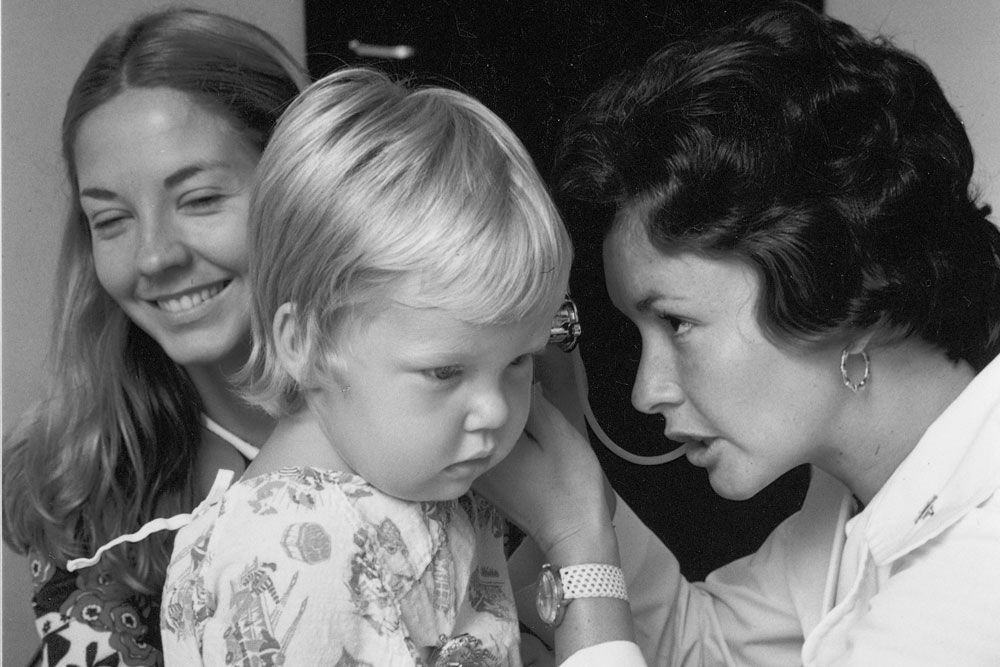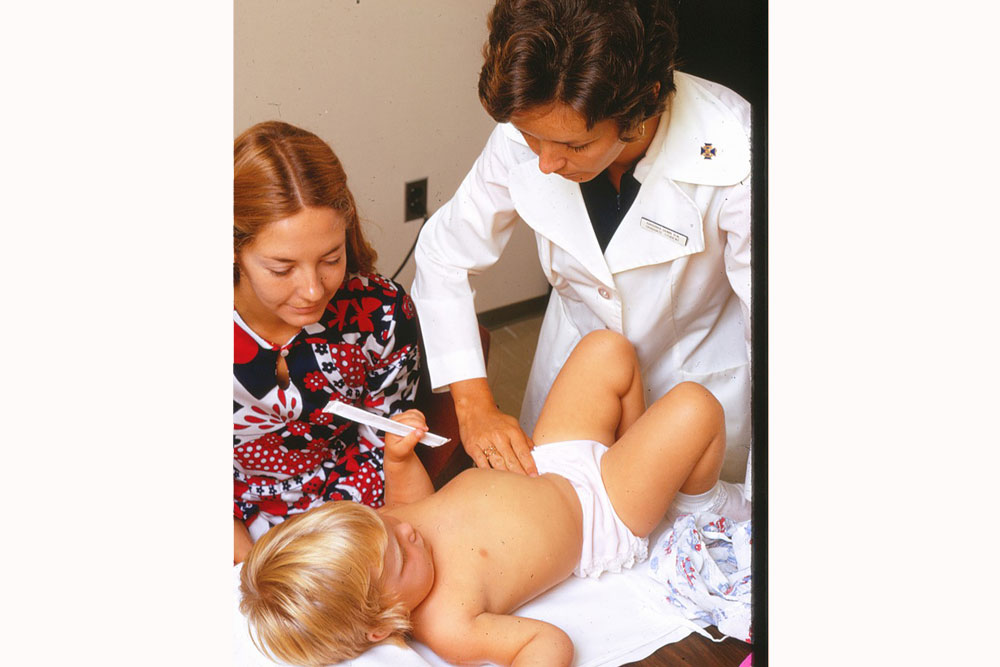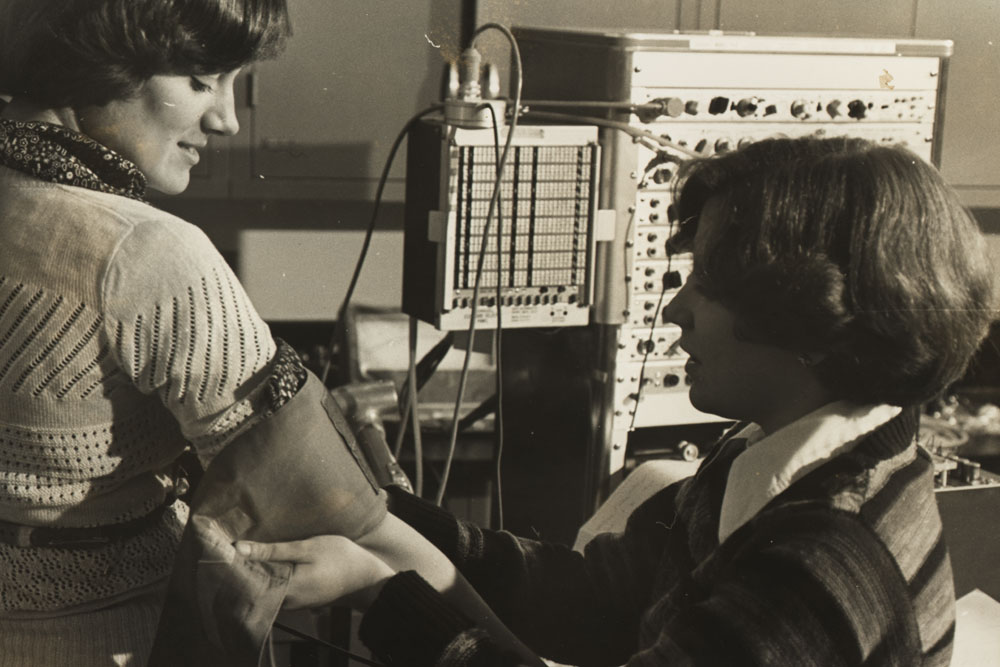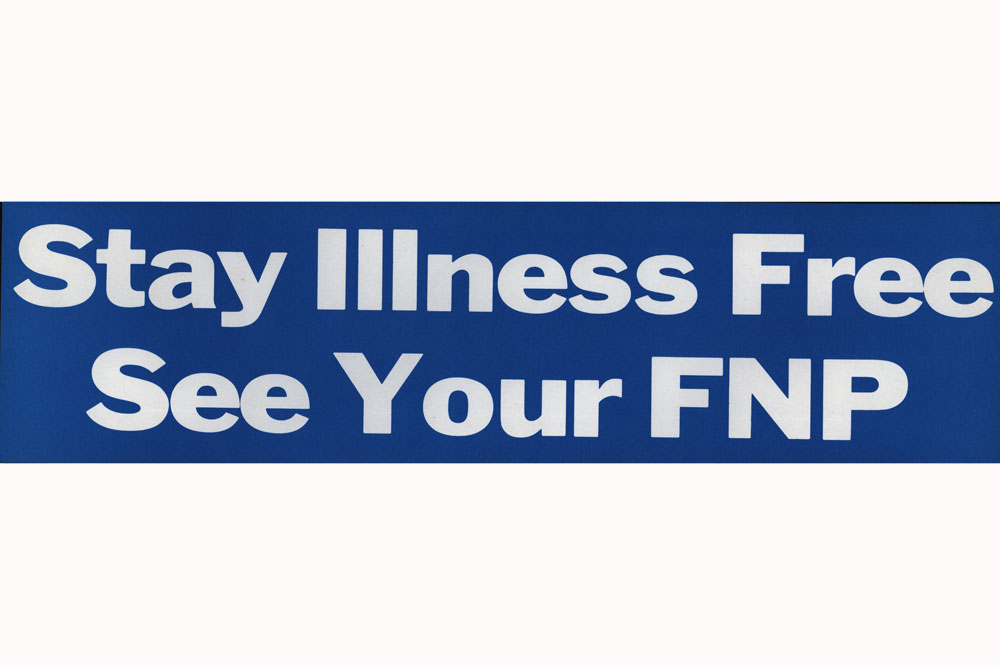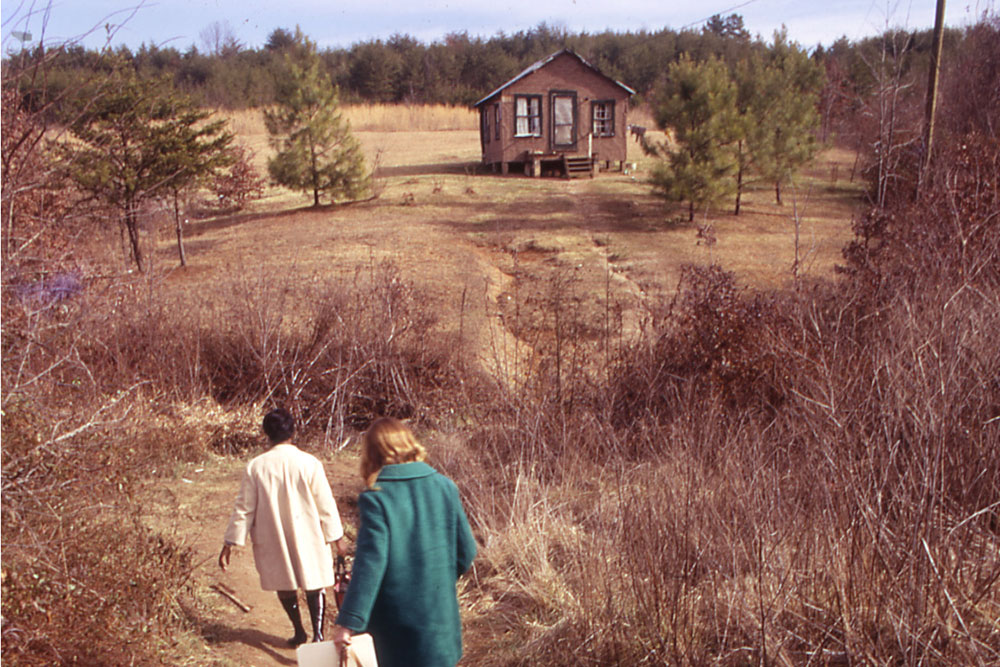
When NPs Were New
Nurse practitioners are a relatively recent phenomena
rooted in a not-too-distant past when interest in social justice, health care equity, and rights for women, racial and ethnic minorities, and people living in poverty began to intensify.
Movements in the 1960s and 1970s “created awareness of inadequate access to healthcare, and sparked a drive to explore innovative approaches to solving these problems,” explains PhD student Jonathan Yoder, who recently interviewed several UVA nurses who started the NP program. “A national consensus conceptualized healthcare as a right, and the expansion of health insurance both privately and through the 1965 enactment of Medicare and Medicaid enabled more citizens to access those services.”
UVA’s nurse practitioner program began in 1970 and blossomed during a period of immense growth for such programs: between 1965 and 1973, 65 programs were launched around the United States. By 1972, we were “no longer saying, ‘the patient appears to be bleeding.’ We were ready to tell you what it was, how it was, and how to handle it,” explained Barbara Brodie, PhD, RN, FAAN, professor emerita, who was instrumental in building the NP program.
By 1976, 32 UVA students were enrolled across four established programs: Adult NP, Family NP, Pediatric NP, and the Emergency NP program—the nation’s first. For these freshly minted NPs, innovation ruled the day. “There were no hospital privileges then; there was no prescriptive authority,” one nurse recalled. “So we figured out ways around the rules and the regulations and the law. And practice always goes ahead of the law.” As some of the first NPs working in the state, these UVA graduates led the way in solving these myriad challenges.
It was not until 1973—three years after UVA’s NP programs opened—that the Virginia General Assembly passed legislation authorizing nurse practitioner practice. Independent practice and prescriptive authority would prove later barriers, but the rest, as they say, is history.


